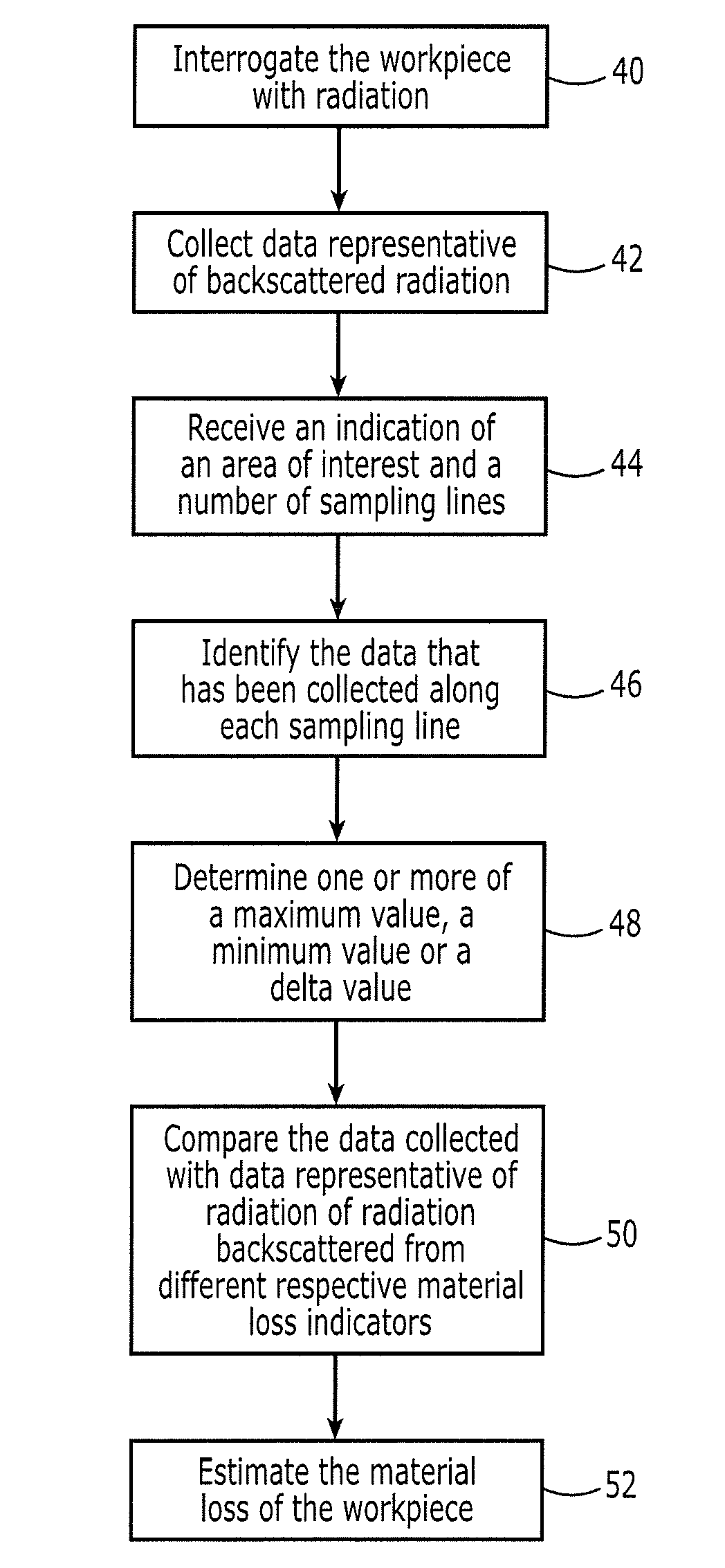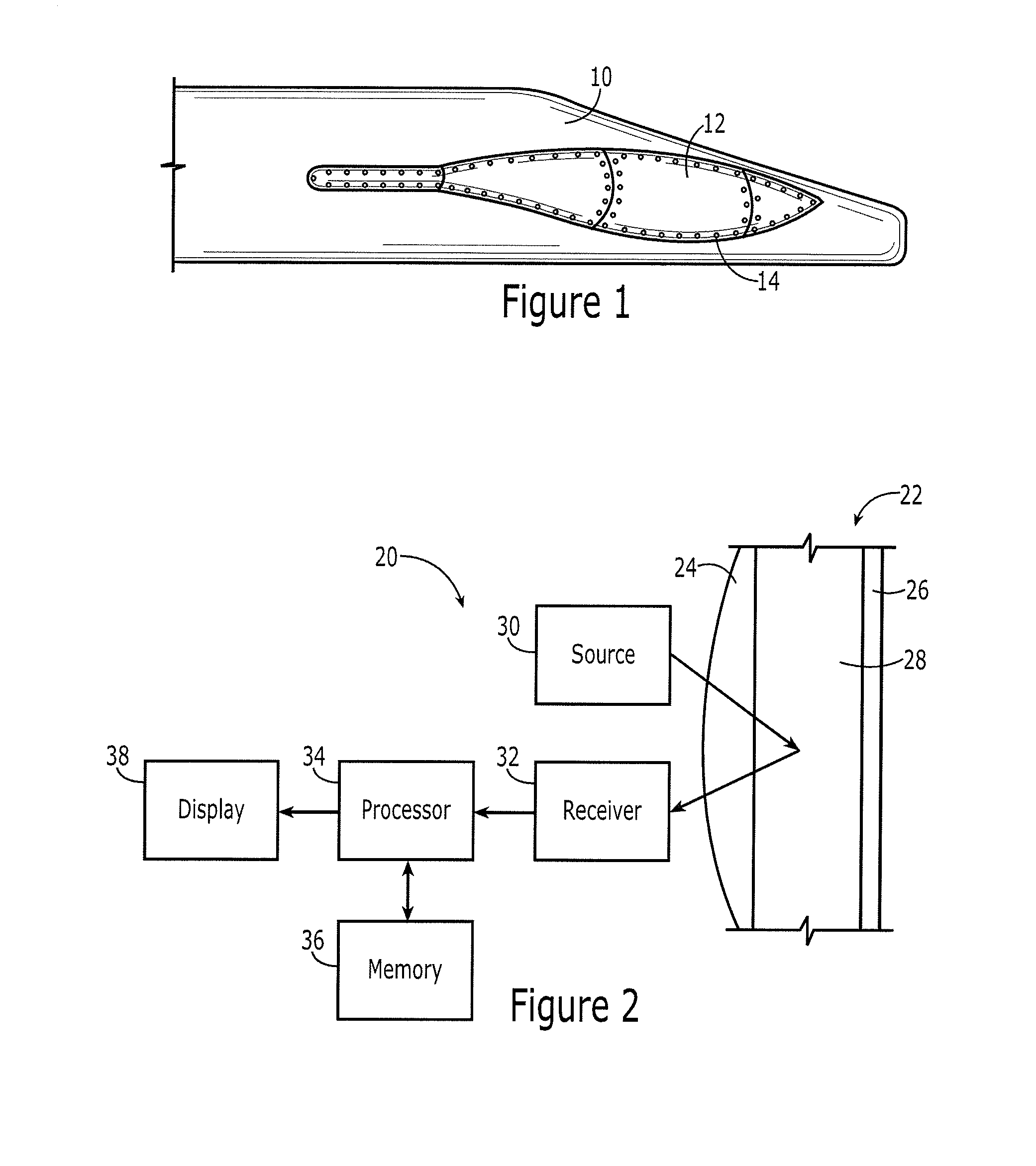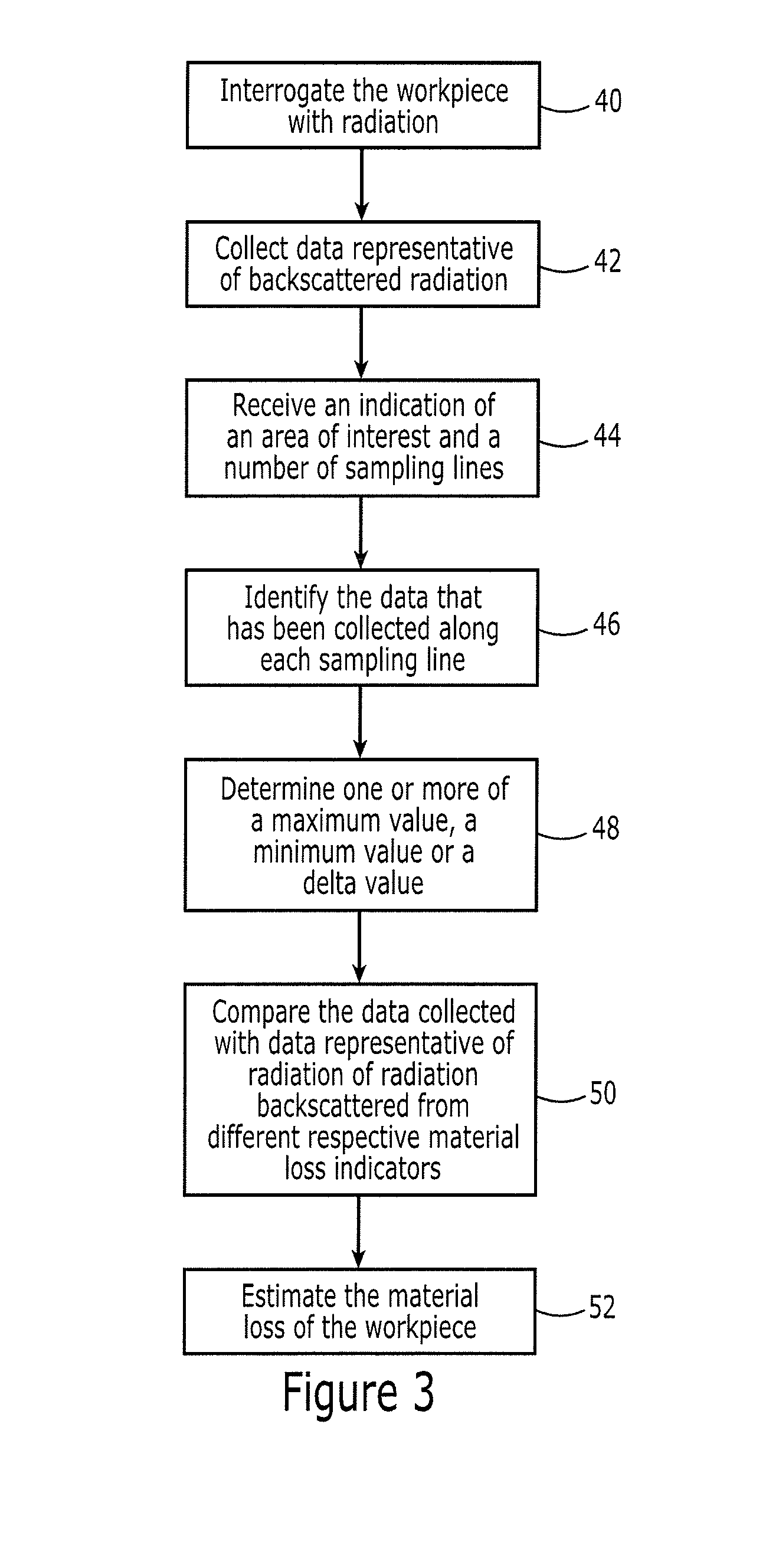Method and system for non-destructively evaluating a hidden workpiece
a workpiece and workpiece technology, applied in the field of methods and systems for non-destructive evaluation of workpieces, can solve the problems of significant aircraft downtime at a repair depot, remote locations of structural assemblies, and prone to corrosion in remote locations, so as to achieve the effect of without disassembly and without significant disassembly
- Summary
- Abstract
- Description
- Claims
- Application Information
AI Technical Summary
Benefits of technology
Problems solved by technology
Method used
Image
Examples
Embodiment Construction
[0030]The present disclosure now will be described more fully with reference to the accompanying drawings, in which some, but not all embodiments of the invention are shown. This disclosure may be embodied in many different forms and should not be construed as limited to the embodiments set forth; rather, these embodiments are provided so that this disclosure will be thorough and complete, and will fully convey the scope of the invention to those skilled in the art. Like numbers refer to like elements throughout.
[0031]A method and system are provided for non-destructively evaluating a workpiece hidden by an overlying structure. As used herein, a workpiece is hidden if all or a portion of the workpiece is hidden from view, that is, visually hidden, absent disassembly of a structural assembly including the workpiece. A variety of workpieces may be non-destructively evaluated. In this regard, the workpiece may be a structural component of a wide variety of different structural assembli...
PUM
| Property | Measurement | Unit |
|---|---|---|
| length | aaaaa | aaaaa |
| thickness | aaaaa | aaaaa |
| thickness | aaaaa | aaaaa |
Abstract
Description
Claims
Application Information
 Login to View More
Login to View More - R&D
- Intellectual Property
- Life Sciences
- Materials
- Tech Scout
- Unparalleled Data Quality
- Higher Quality Content
- 60% Fewer Hallucinations
Browse by: Latest US Patents, China's latest patents, Technical Efficacy Thesaurus, Application Domain, Technology Topic, Popular Technical Reports.
© 2025 PatSnap. All rights reserved.Legal|Privacy policy|Modern Slavery Act Transparency Statement|Sitemap|About US| Contact US: help@patsnap.com



